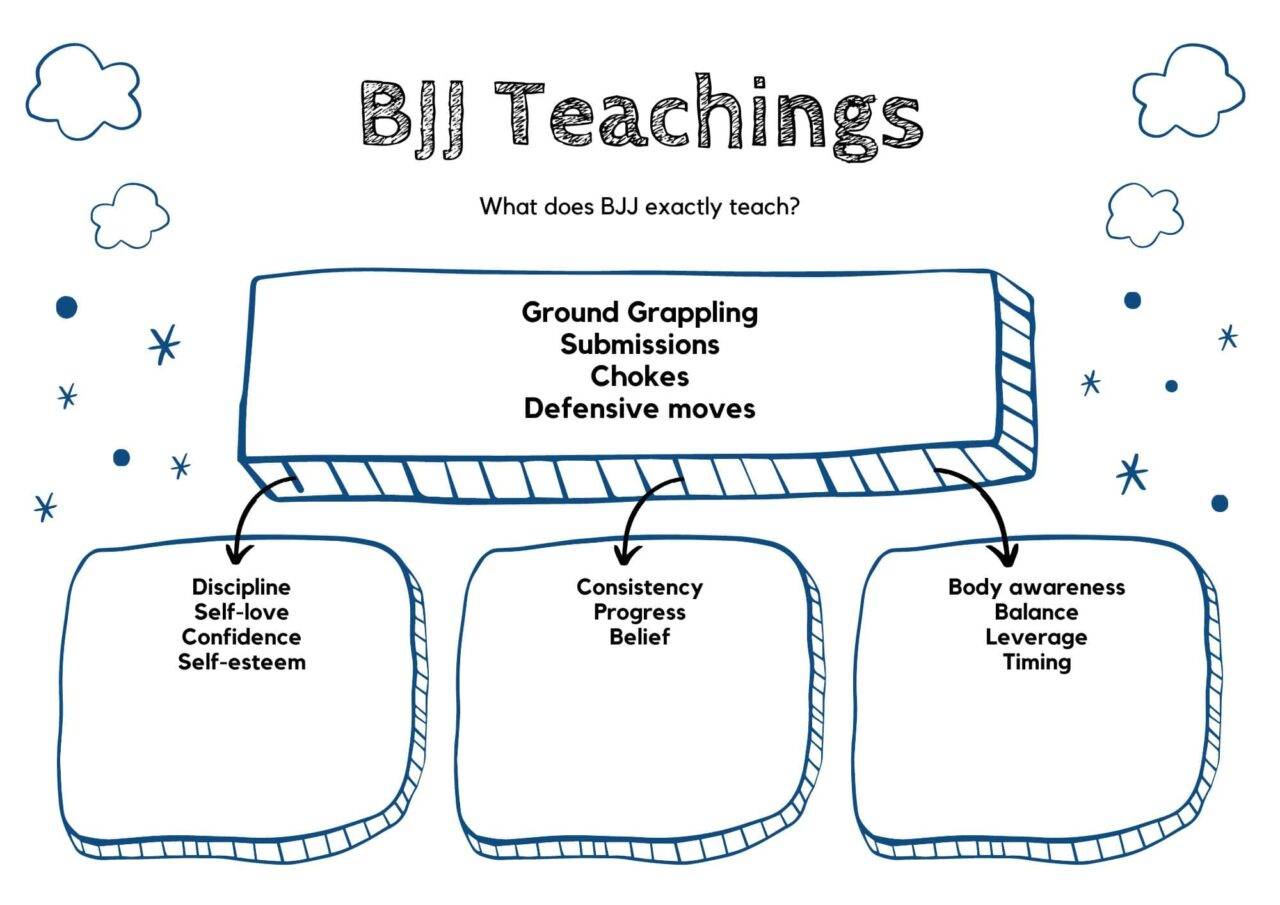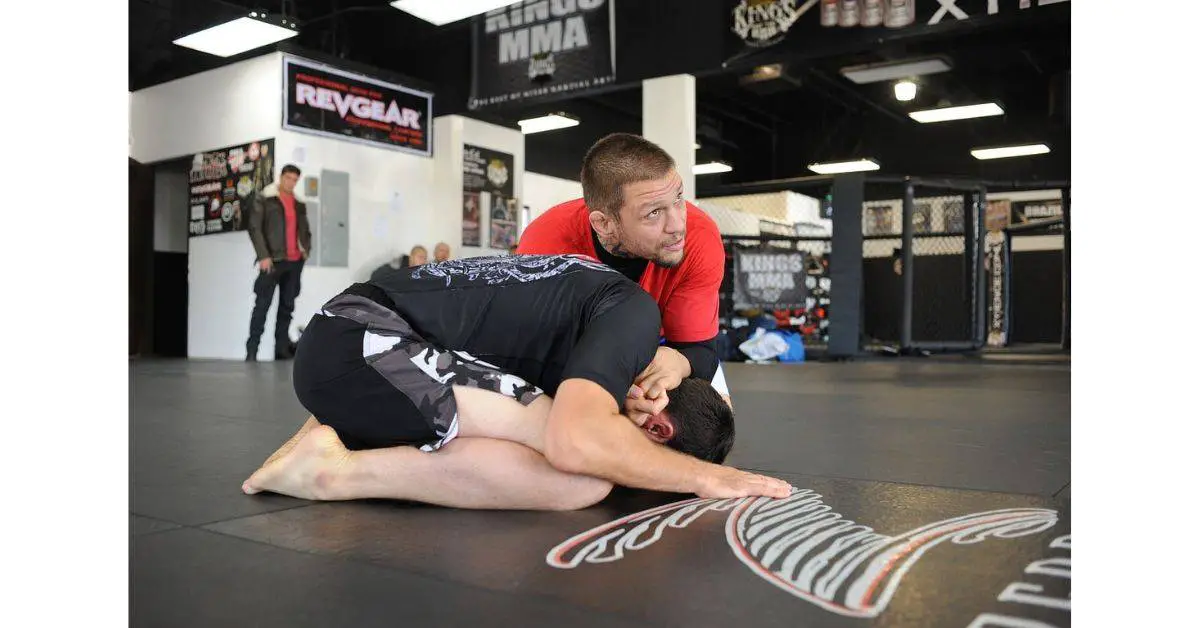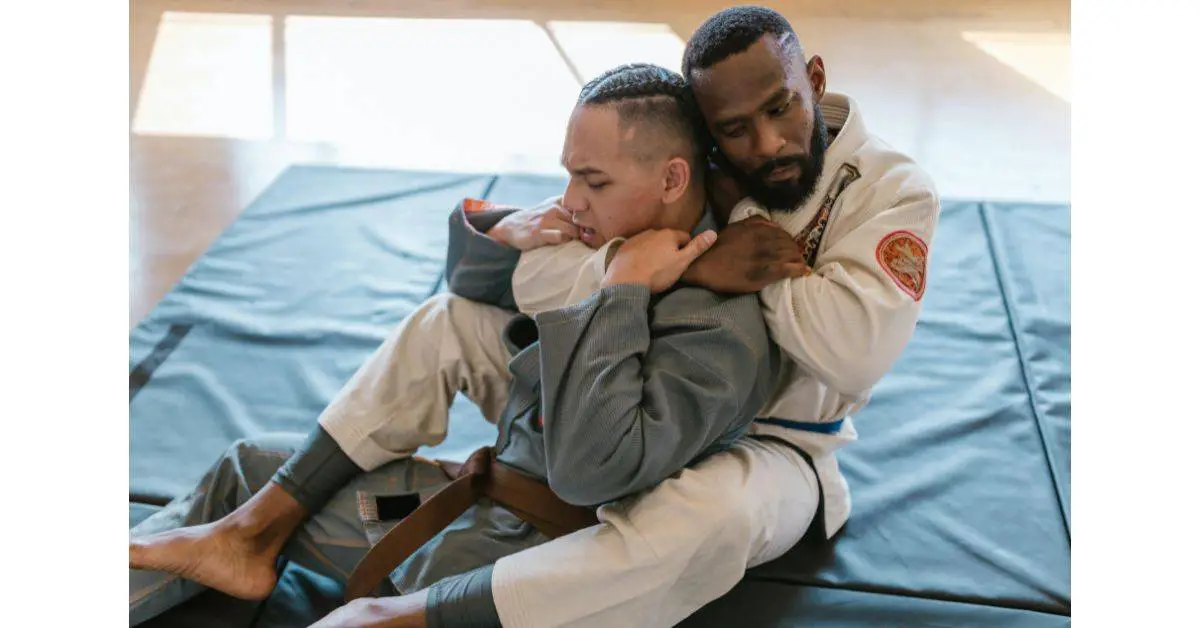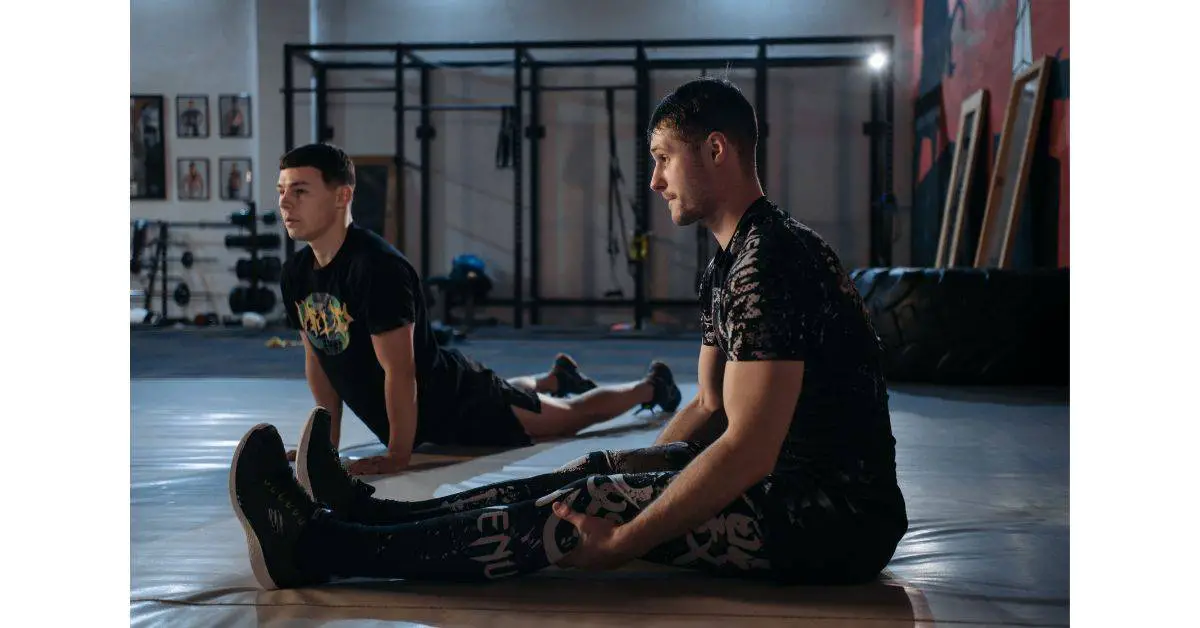BJJ promotes the idea that a smaller, weaker individual can successfully defend against a superior, stronger opponent by employing leverage and accurate techniques. Most notably by applying joint locks and chokeholds to their opponent.
Brazilian Jiu-Jitsu training includes grappling and ground combat. Most of its techniques center on throwing your opponent to the ground, where you try to exert control over them and ‘tap out’ their submission. Students utilize grip, leverage, understanding, tactical prowess, and problem-solving.
Martial artists utilize BJJ instructions for competitive sport grappling (GI and no-Gi), mixed martial arts (MMA), or self-defense. Sparring, often known as “rolling,” and live practice are essential components of BJJ training, making it a realistic martial arts form and a fantastic cardiovascular workout.
Read this article to discover what BJJ training entails, what it teaches, and how effective it is!
Before diving in, I encourage you to read an article of mine on the best grappling dummies for your money. These will help you progress outside your martial arts gym, which is a suitable way of boosting your learning pace.
What does BJJ teach?
During your first month of taking Brazilian Jiu-Jitsu training, you’ll have plenty of opportunities to learn new things. You’ll be in a stimulating learning atmosphere. You may not understand all the emotional and physical reactions when you first get on the mat. It could be tough to keep up with the intense barrage of brand-new words and thoughts. You will learn a lot of simple and beneficial things.
BJJ teaches you to keep your base while maintaining body awareness, balance, leverage, and timing. Jiu-Jitsu teaches you ground grappling, the most effective fighting technique; this leads to several ideas for protecting yourself in a fight, such as managing your distance from an opponent.

Brazilian Jiu-Jitsu improves flexibility and teaches you how to use your legs to control a stronger opponent in tight situations. You face both mental and physical challenges each time you train.
When you begin BJJ training, you rely more on your strength and power than your techniques. Instead of giving in to this impulse, concentrate more on the methods without overusing your muscles. You will become exhausted fast if you use too much strength too soon.
BJJ is quite taxing in and of itself, relax and concentrate on your breathing. When you correctly master the methods, you’ll discover how to control your opponent without using too much force.
Is learning BJJ worth it?
Athletes and thousands of people worldwide see the advantages of BJJ and how it enables a fighter to take control of a situation and send an opponent to the ground.
BJJ is worth learning as it is an excellent self-defense technique if your objective is to master a grappling-based martial art that includes takedowns, ground combat, and submissions. Additionally, it grants its trainees countless mental and physical benefits, such as self-confidence and reduced stress.

BJJ is one of the most comprehensive grappling styles. The benefits of BJJ are numerous, here are only a few of them:
- Better physical shape
- Reduces stress
- Lower aggression and violence levels
- Increased confidence
- Better self-esteem
- Lower risk of cardiovascular issues.
- Being present in the moment
- Appreciation
- Consistency in life
- Discipline
- Work-ethic
As you can see, the list is long. However, it goes much further. Follow the link to learn more about the mental benefits of BJJ.
It is suitable for any age, height, gender, and ability level. It instructs on body awareness and heightens strength. Likewise, it is a greater capacity for patience, as this is one of the more difficult skills to master. Its benefits are not only physical, but there are also mental as well.
If BJJ is worth learning or not depends on you. Ultimately, it relies on your own objectives, time availability, commitment level, and financial limitations. Progress may be slower than in other sports, so you must be committed over time to see results.
If you want to learn more about why BJJ is suitable for self-defense situations, follow the link to an article of mine on the topic.
Does BJJ include sparring (rolling)?
One of the most crucial aspects of BJJ training is sparring. You can practice your skills thanks to them. They can help you improve and develop your Brazilian Jiu-Jitsu abilities considerably. They are also a lot of fun for a lot of people. It may even sometimes be the highlight of your Brazilian Jiu-Jitsu training.
BJJ training includes sparring, often referred to as rolling, since it’s the closest resemblance to fights training can get to. As a result, it provides plenty of benefits and boosts the progression of its trainees. Indeed, rolling is a fixed part of BJJ training.
Rolling provides a lot of benefits. They put your abilities to the test. Your ability to assess your strengths and limitations is made possible by them. As a result, they are beneficial to you. You could even say that sparring is the same as learning.
While rolling, you may observe the subtleties of the methods as your opponent tries to thwart and block them. You can learn how to note the modifications needed for escape submissions through sparring. Regular rolling also makes you more aware of the potential dangers in various scenarios.
BJJ sparring is, after all, a chance to experiment, learn new skills, and have fun. Additionally, you have to be rolling if you ever plan on competing. Regular, every day, realistic sparring accounts for nearly all of BJJ’s strength and effectiveness.
You merely need to place yourself in situations where you can test your skills if you want to defend yourself realistically. To summarize, if you don’t have any health contraindications, etc., not rolling ever is a bit excessive and will halt your growth in learning BJJ.
Is BJJ effective?
UFC athletes have conclusively shown that Brazilian Jiu-Jitsu (BJJ) is a very efficient combat technique inside the UFC octagon. To improve their self-defense abilities outside the octagon if they get involved in an unforeseen street fight, many people desire to master this powerful Brazilian technique. But how practical is BJJ in self-defense in real life?
BJJ is effective both for self-defense and all fighting situations because it enables you to control an attacker without utilizing strikes, which can be chaotic and hazardous for both the striker and the recipient. That is, of course, unlike other martial arts, such as boxing and kickboxing.
Undoubtedly, you can use the BJJ combat style in street self-defense circumstances. Although the efficiency of this martial art in a street battle is dependent on various conditions, similar to any other martial art, Jiu-Jitsu remains highly efficient in everyday life.
What’s the first thing you learn in BJJ?
Your first Jiu Jitsu technique will not be practiced against a reluctant opponent – and may not even include a receptive partner! To begin, you must study and comprehend Jiu Jitsu mechanics and allow your body to acclimate to the peculiar motions required by the discipline.
In BJJ training, you’ll first learn how the basics, which include a series of fundamental guard positions. Additionally, you’ll learn an offensive movement, which can be anything depending on where you train. However, you’ll most likely learn basic rolling techniques, which are unintuitive.

Many of these motions will simulate Jiu-Jitsu techniques, such as submissions or escapes. If you initially learn these acts, you will have a greater comprehension of the strategies that rely on them.
The shrimp may be the first Jiu-Jitsu move you’ll learn. You use this technique as a warm-up exercise before class. It eventually turns into a simple escape plan. You carry out this technique while you lay on your back or side. You use shrimping to get yourself out of your opponent’s leading control.
Likewise, you execute it by planting one foot on the mat, preferably the foot on the side you want to press out in the direction of your opponent; but, depending on the situation, you can alternatively use two feet.
Once you position your foot firmly, you press off the mat to propel your butt away from your adversary. You should be framing your opponent at the same time that you’re using your arms to push them away.
You repeat this motion until you have sufficiently distanced yourself from your opponent to recompose your defense or until you have moved down the mat.
Final words
Brazilian Jiu-Jitsu teaches you numerous life-changing lessons. It’s a unique martial art that teaches discipline, confidence, and self-defense techniques, among other things, rather than kicks and blows.
Because it provides solid grappling techniques, BJJ is a worthwhile martial art to master. It can help you change your conduct and character to become a better person.
If you enjoyed reading this article, I encourage you to follow the link to read about the best ways to train BJJ at home, and thus, progress outside your martial arts gym.

